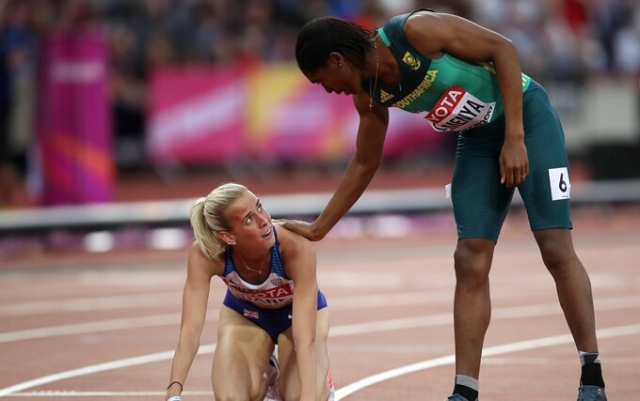 Caster Semenya won her appeal to the European Court of Human Rights, but it would be wrong for World Athletics to change course. Photo: John Walton. /PA Wire
Caster Semenya won her appeal to the European Court of Human Rights, but it would be wrong for World Athletics to change course. Photo: John Walton. /PA Wire
The exact medical name for Caster Semenya Sexual Development Difference, or DSD, is 5-alpha reductase deficiency. This is a condition that only affects male sexual characteristics before birth and during puberty. Those who have it have one X and one Y chromosome in each cell, as well as testicles, which can be internal due to a lack of the hormone dihydrotestosterone, which can interfere with the formation of external sex organs. In other words, Semenya 46XY: genetically male. And this is where the athlete's case for admission to the women's category should begin and end.
But in an unusual twist to this harrowing saga, the European Court of Human Rights (ECtHR) found that the Swiss government failed to protect Semenya from discrimination when, in 2020, its Supreme Court refused to overturn a sentence given to athletes with high testosterone levels should have take medication to lower it in order to compete as a woman. The decision is long and complex, but the implications could potentially be severe: The South African legal team is already urging World Athletics to change policies to accommodate DSD runners.
On the contrary, this is the moment for the global governing body, which introduced rules in 2018 requiring DSD athletes to suppress testosterone production to keep their nerves at bay. We only need to remember the decade before that change in approach, when the DSD controversy severely skewed fairness for women in middle distance competition. Take the final of the 2016 Women's Olympic 800m, a startlingly lopsided race in which the entire podium was, to use an alternative shorthand, intersex.
Leading by a margin rarely seen over two laps, Semenya took the gold to Rio de Janeiro with ease. She was followed by Margaret Wambui of Kenya and Francine Niyonsaba of Burundi, both also 46XY and thus biologically male.
Britain's Lynsey Sharp, who needed to show a personal best to finish sixth, subsequently burst into tears as she hugged the other two runners who missed out on medals in a show of unity. “You see how emotional it was,” she cried. “We know how we feel for each other. It's out of our control and shows how much we rely on the people at the top to sort it out.»
In the end, World Athletics sorted out the mess after all and vowed to stick to their stance by forcing DSD athletes to begin testosterone suppression. But Semenya is clearly determined to recognize this as a violation of human rights, and her lawyer characterizes her struggle as a crusade to «compete and run for freedom.» Why female pronouns, you ask, when it has already been established that Semenya has male biology? The reason is that in this sad and difficult case, Semenya was legally and socially a woman from the earliest years of her life in an extremely poor rural part of South Africa.
In 2009, shortly after Semenya won her first World Championship gold in Berlin, I visited Ga-Maselong, the village in the province of Limpopo where she was born and where family members rushed to tell how she was brought up as a child. Her mother Dorkus, using Caster's name, Mokgadi, said, «Mokgadi is a girl. Ask any neighbor here, they helped grow it. My child is a girl.»
There was sheer horror in this community at the thought that someone who she was would know she was something else. In the eyes of those closest to the Seed, this meant an attempt not only to reclassify, but to dehumanize her. And that is why there must be an element of compassion in this case. Semenya can't control her chromosomal abnormality, and she doesn't drag her complaints through the courts in some narcissistic attempt to distort fair play for all her rivals. She is simply convinced that, since she has been treated as a woman in all walks of society for all her 32 years, she should be recognized as such in her chosen sport, even if medical realities say otherwise.
But this is not so . it is these realities that must ultimately prevail. You cannot guarantee a level playing field for women by admitting athletes according to who they think they are, only according to what they invariably are. Semenya has a congenital disease that is characteristic only for boys and men. That's why any excuse for her participation in the elite female races falls apart. And that is why World Athletics is not only not inferior to the ECtHR, but should redouble its efforts.





















































Свежие комментарии